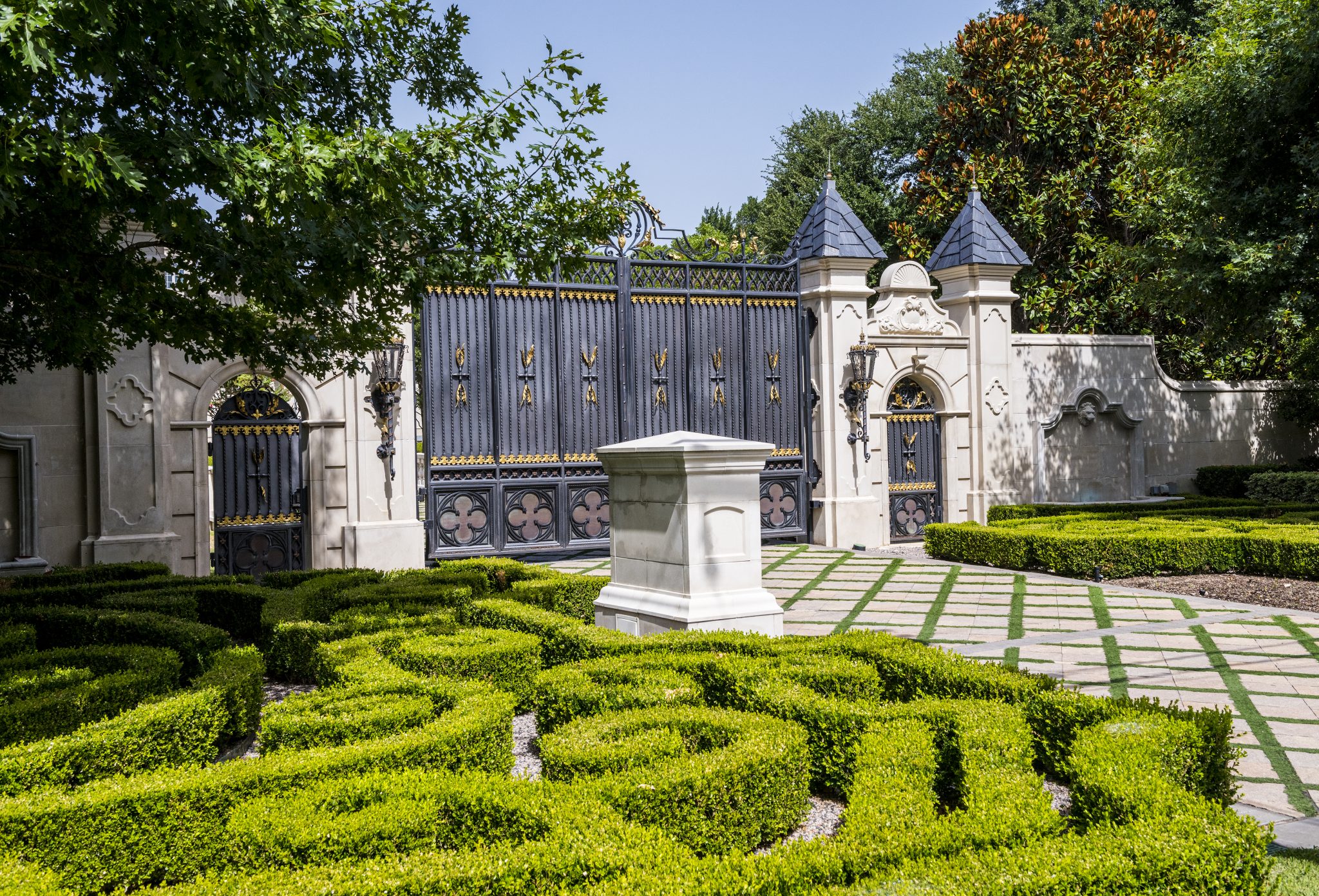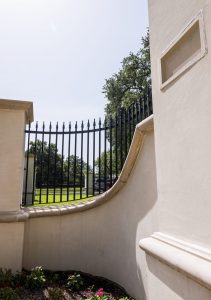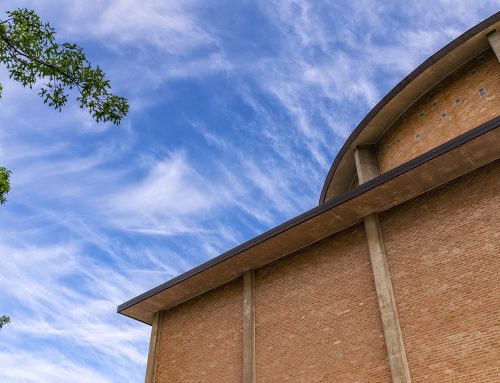DO FENCES REALLY MAKE GOOD NEIGHBORS?
“The wide world is all about you. You can fence yourselves in, but you cannot forever fence it out.”
— J.R.R. Tolkien
In a state where the unofficial song is “Don’t Fence Me In,” some Preston Hollow neighbors prefer fences — the higher the better.
The City of Dallas development code limits fence heights in front yards to 4 feet and backyards to 9 feet. That has been in place since 1968. Homeowners and builders must obtain permits from the city’s Board of Adjustments to build a fence that is higher. The process includes filling out an application and providing a reason for the adjustment. Often, land-use attorneys help with the application, and neighbors file letters of support or opposition. The board is made up of 15 volunteers appointed by Dallas City Council members and the mayor.
An analysis of city public records documenting applications to the board going back to 2005 found that the majority of exemption requests for tall fences come from Preston Hollow residents. Historical city maps provided by Steve Long, the adjustment board administrator, show clusters of green in Preston Hollow where exceptions to the height rules have been approved but less activity elsewhere in Dallas.
Even golfer Jordan Spieth requested to add 3 feet to his 4-foot front yard fence on Brookview Drive in November 2015. And it’s fence city between Royal and Walnut Hill on Strait Lane.
Sam Gillespie, who served for 10 years on the adjustment board, says homeowners think, “I built this $5 million house. I want to feel safe. A big fence is architecturally consistent with a big house. All of my other neighbors are doing it. Why shouldn’t I?’’
Reasons for filing exemptions include privacy, safety, noise reduction, increasing property value and having fences that look like others in the community. But some neighbors say that oversized fences limit light, view, air and storm water flow, as well as cause a decline in aesthetics and sense of community.
“There’s a reason city forefathers and decision-makers chose to regulate heights in the front yard to 4 feet,” Gillespie says. “It generates community and a spirit of friendliness in neighborhoods. A bunch of 8-foot, 10-foot fences will adversely affect neighborhood property values because it becomes a less-desirable community.”
Gillespie says he thinks there is an unspoken agreement between the board members, the land use attorneys and city staff that it’s probably OK if neighbors build a 7- or 8-foot fence as long as it’s not opaque. Those who received approval were often land-use attorneys and residents who could demonstrate that the previous 10 similar requests within a half-mile radius in Preston Hollow had been approved.
 However, the board denied an exemption request twice from a resident on Inwood Road. The home is on a street with large houses and very few fences. “The lady and the attorney were incredibly dismayed and perplexed,” Gillespie says. “But their request was inconsistent with the neighbors.”
However, the board denied an exemption request twice from a resident on Inwood Road. The home is on a street with large houses and very few fences. “The lady and the attorney were incredibly dismayed and perplexed,” Gillespie says. “But their request was inconsistent with the neighbors.”
Bluffview is one area where residents actively lobby against tall fences. The board’s role is to determine whether an exception adversely affects neighboring properties. This neighborhood organized to oppose high fences so that they kill almost every oversized fence proposal in Bluffview. Zoning consultants say they won’t touch a case on Cherokee Trail, for example. The Bluffview residents have been known to file 60 letters of opposition to a tall fence.
Nancy Kenty and Pat White are Bluffview neighbors who are passionate about protecting their community’s aesthetics, including fence heights. They pay attention to construction in the neighborhood on their daily walks, monitor the Friday newspaper for public announcements of cases appearing before the board and attend board briefings at city hall about fence extension requests in their neighborhood.
“We call our neighborhood ‘country living in the city,’ ‘‘ says Kenty, who has lived in Bluffview for 52 years. “If you have 8-foot fences on two sides, you’re in a prison.”
White, who has lived in Bluffview for 41 years, says she and other residents support the city code. “We want to keep the open neighborhood feel that we have. If you have a 4-foot fence, you can still talk over it and wave.”
They recount stories of calling a building inspector when contractors built 8-foot walls without permission, a builder who lobbied walkers to vote for a fence exemption and a sore-losing contractor who lined up his workers to urinate in a neighbor’s yard.
“It takes eternal vigilance. If you let one tall fence go, that’s it.”
“We’re not vigilantes,” Kenty says. But she and neighbors guard against exemptions to the code. When there’s a precedent, it’s more difficult to argue that tall fences are inconsistent with the neighborhood. “It takes eternal vigilance. If you let one tall fence go, that’s it.”
White says, “It’s a democratic process. You get to speak your piece.”
City Councilman Lee Kleinman says he thinks 4-foot fences are plenty in the front, unless the home is on a corner lot. “I don’t think people should be creating fortresses,” he says. “I’m not a big fan of gated communities. That’s just me. Those kinds of things cut you off from your neighbors. The community needs to see each other and be visible to the rest of the neighborhood.”
 Kleinman acknowledges that some neighbors are motivated by security when they request a higher fence.
Kleinman acknowledges that some neighbors are motivated by security when they request a higher fence.
“The crime perception is kind of a mixed bag,” Kleinman says. “While someone cannot see to the front of your house, public safety people also can’t see to the front of your house. A tall fence gives people a place to hide.”
Planting large hedges around the property line is a way to circumvent the fence ordinance. “That is allowed because it’s considered landscaping,” Kleinman says.
Landscape architect David Hocker says he’s designed a lot of walls, but they’re architecturally related to the house. The problems, he says, start with overbuilding. “They build setback to setback and expand the houses. Then you have neighbor on top of neighbor. When you’re so close to your neighbor then you automatically want to go higher with your fence.”
Hocker suggests using horticulture to construct a natural barrier between neighbors. It’s also less expensive than a big masonry wall, he says. But he warns that because people build to the setback lines, “you have these dead zones and you can’t get any plants to live in there.”
Virginia Nisbet, who’s lived in her Schreiber Manor home for 19 years, recently received a citation from a code inspector for having a fence that is too high, KTVT reported recently. The fence was built when she bought the house. She says fences in the neighborhood are pretty much the same height. The TV station reported that 21 homes on two nearby street were cited for not having permits. The city, according to the report, gave the violators seven days to “fix the problem” or pay fines in excess of $300. Nisbet told the station that she feels safer with an 8-foot fence. “With a shorter fence, people could just hop over it or look over and see if you’re home.” Kleinman says Dallas code compliance officers are mostly reactive, so the citations must have been issued because a fellow resident called it in.
“Sometimes you get into neighborhood squabbles,” he says. “Welcome to Preston Hollow. It happens all over Dallas.”
FENCE FORAY: How to file an application to the Board of Adjustments
Applications are submitted to the Building Inspection Division at the Oak Cliff Municipal Center, 320 E. Jefferson Blvd., Room 105. This is where to get a Board of Adjustments application, a checklist of materials needed to be submitted, information on when the completed application could appear before one of three boards and the filing fee. For more information, visit DallasCityHall.com.
Advocate staff writers Keri Mitchell, Ashleigh Ekwenugo and Judith Juarez contributed to this report






